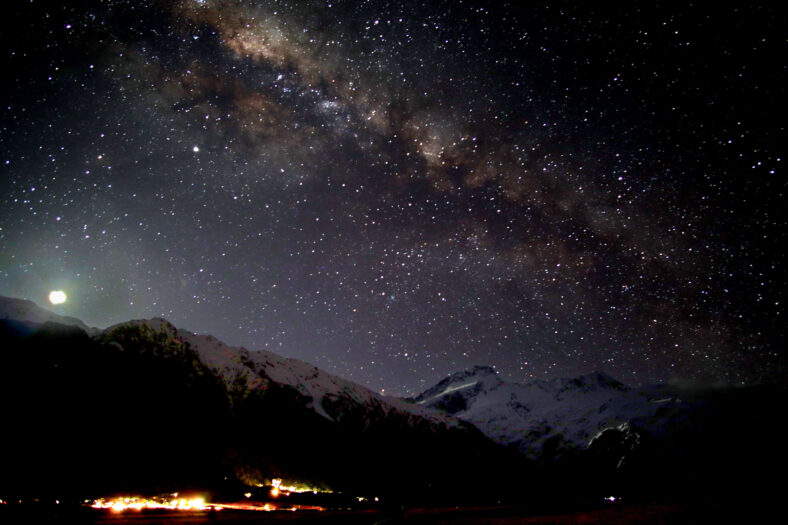Astronomers Discovered A Nine Ring Galaxy That’s Over Two Times Larger Than The Milky Way

While reviewing a survey of the sky taken in 2019, astronomers using the Hubble Space Telescope spotted LEDA 1313424. The galaxy is nicknamed Bullseye and is 2.5 times larger than our Milky Way.
At first, the astronomers counted eight rings. Later, a faint ninth ring was confirmed using data from the W.M. Keck Observatory in Hawaii. LEDA 1313424 contains a total of nine rings, which is the most that has been seen in any galaxy so far.
It is believed that the rings formed as a result of a collision with a dwarf galaxy roughly 50 million years ago. The smaller galaxy crashed into the center of LEDA 1313424.
Its impact sent shock waves rolling through the larger galaxy, pushing out clouds of cosmic gas and dust to create rings that serve as new star-forming regions. Colliding galaxies are nothing new, but it is rare for one to pierce the heart of another with such precision.
The blue dwarf galaxy that ran into LEDA 1313424 is still linked to the collision site by a thin tether of gas. It sits about 130,000 light-years away to the left of its larger companion.
“We’re catching the Bullseye at a very special moment in time,” said Pieter van Dokkum, a co-author of the study and an astronomer at Yale University. “There’s a very narrow window when a galaxy like this would have so many rings.”
LEDA 1313424’s rings have not just set records—they have also helped verify past theories about how galactic structures develop.
The rings are not evenly spaced around the galaxy in perfect concentric circles like a target. Instead, they are clustered tightly at the center of the galaxy, while the outer rings are more widely spaced out.
The pattern suggests that the first few rings formed at a rapid rate and spread out, carried by momentum from the initial impact.

Sign up for Chip Chick’s newsletter and get stories like this delivered to your inbox.
As the disturbance from the collision began settling down, the remaining rings came together more slowly and did not travel as far.
“That theory was developed for the day that someone saw so many rings. It is immensely gratifying to confirm this long-standing prediction with the Bullseye galaxy,” said van Dokkum.
Over time, LEDA 1313424’s rings will likely fade away, but its current configuration will help scientists determine how galaxies form rings in the first place. Astronomers hope to find more multi-ringed galaxies like this in the future.
NASA’s Nancy Grace Roman Space Telescope, Hubble’s successor, is scheduled to launch in May 2027. It has a field of view that is 100 times larger than Hubble’s and is designed to capture light from millions or even billions of galaxies.
The results of the study were published in The Astrophysical Journal Letters.
More About:News





